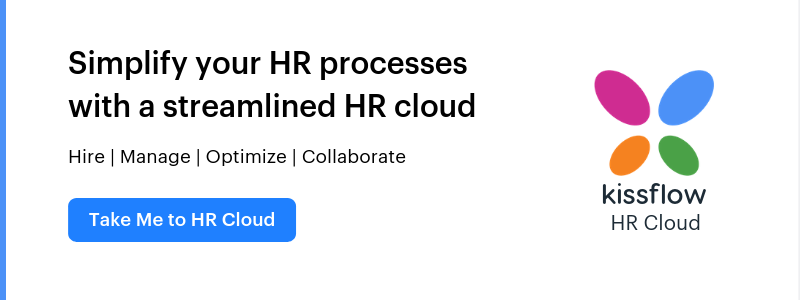The days of HR just fulfilling some small roles around a company are long gone. HR management is a full-fledged business partner and has to make important strategic decisions that affect the entire company. They have touchpoints into every level of the organization and listen directly to the voice of the employees.
As HR has grown in its role, it has become much more strategic. They are not only concerned with hiring and setting policy, but need to have an in-depth understanding of everything that is happening in the organization. As Janine Walter, Chief Talent Officer for Epic Holdings said, “HR professionals need to understand something about how business and companies work. What does the CEO worry about? What does the CFO worry about?”
As accountability increases, HR processes needs to be more strategic. Whether you work in a small organization or a large corporate, your human resource strategy should align with the vision and financial success of the business.
A good human resources strategy should:
- Focus on the objectives of the organization
- Analyze the present resources
- Adhere to global market changes, trends, and technology
- Have a patterned flow
- Allocate resources which includes person, time, and money
- Allow room for improvement
- Work towards the future with data and numbers
What an HR strategy needs to be successful
1. Create strong corporate identity
Seth Godin said, “A brand is the set of expectations, memories, stories, and relationships that, taken together, account for consumer’s decision to choose one product or service over another.”
The visual presentation of your company is incredibly important as it represents how the company is perceived by the outside world. The design, logo, website, packaging and merchandising sets an initial buzz. But what makes it sustainable is the company’s value in making customers and employees mutually valued and happy.
In 2018, Comparably named Google as the company with best culture. But it is more than having fancy office space with food trucks and massages. It is the people who are not just smart and capable but extremely kind and humble as well. The employer-employee respect, freedom to be creative, great flexible culture, and trust is what sets them a class apart.
2. Novel recruiting strategy
Posting in job portals, although important, is a lengthy to-and-fro process. According to a survey conducted by Betterteam, 70 percent of hiring managers say they’ve successfully hired through social media. Businesses can use social media to their advantage by getting the candidate’s work and education history, hobbies, and their past work instantly. It is also an ideal place to check for referrals, engage in a casual conversation, and see if they fit the culture of the company.
3. Employee engagement
Employee satisfaction does not guarantee motivation and involvement in the company. However, employee engagement accelerates their performance. Employees who are engaged understand the company’s purpose and fit into it perfectly. When employees take pride in working for the company, they provide better services to their customers. There will not be any random excuses for sick-leaves or the work-place conflict. They have a real connection with the employers than simply collecting a paycheck.
4. Performance management
Performance management often gets a bad reputation as a grueling task and is hated by everyone. Rather, it should be an opportunity to motivate employees further. Ideally, the HR manager should play a key role in planning the resource, setting a goal, and monitoring performance management practices. A simple discussion with an employee while setting the goal can help you achieve realistic marks. Instead of giving employees an average rating at the end of the year, regular ratings at short intervals help them work harder and allow room for improvement.
5. Career advancement programs
Learning is a continuous process, and it doesn’t stop with age or success. Company hire an employee for a particular skill, but giving them access to further learning is an excellent investment. It helps in boosting morale and communication. It also aids in strengthening the succession pipeline. You don’t have to worry about retaining your top talent and disrupting the entire process.
Best practices to create a groundbreaking HR strategies
Once the organization realizes the value of HR strategies, there are many questions that follow. Some of them are:
- What are our goals?
- Where do we stand now?
- How to achieve the goals?
It can be a bit overwhelming, but a simple analysis of where the organization stands now and where it wants to be can be the answer. The two popular framework tools which proved to be helpful are SWOT (strength, weakness, opportunities, and threat) and SMART (Specific, Measurable, Attainable, Relevant, and Time Based). These framework models are time-tested and still relevant. But, the future of HR management lies in automation.
Why shift to automation?
HR work is endless. Every day there are new recruitment goals, onboardings, attendance reviews, handling KPIs, signing documents, workshops, and exit interviews. When you use HR software, it simplifies certain aspects, especially the one involved with the paper trail. It provides insightful reports which give time to focus on managing important tasks like analytics and strategy.
Kissflow HR Cloud – easy to use and efficient
Every HR manager should have the right tools for creating a winning strategy for the company. The Kissflow HR cloud makes mundane yet crucial HR management tasks a tad bit easier. From the paperless onboarding process, approving holiday request, time management, and having a track of performance, it offers everything in a single place. The reports are data completely data-driven without any bais. It is easy to use, and you can get a free trial today to see for yourself.


